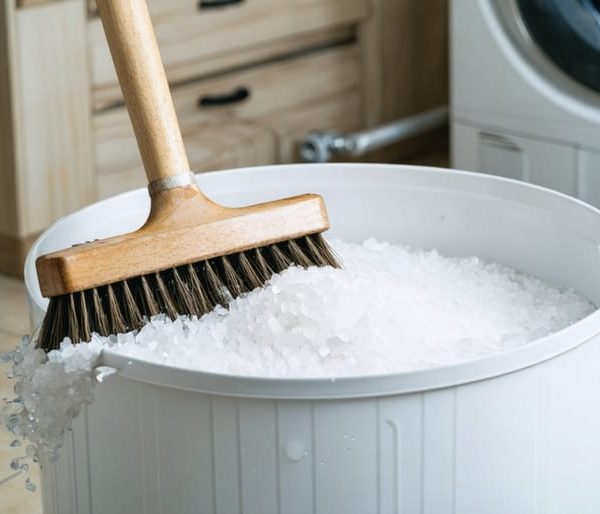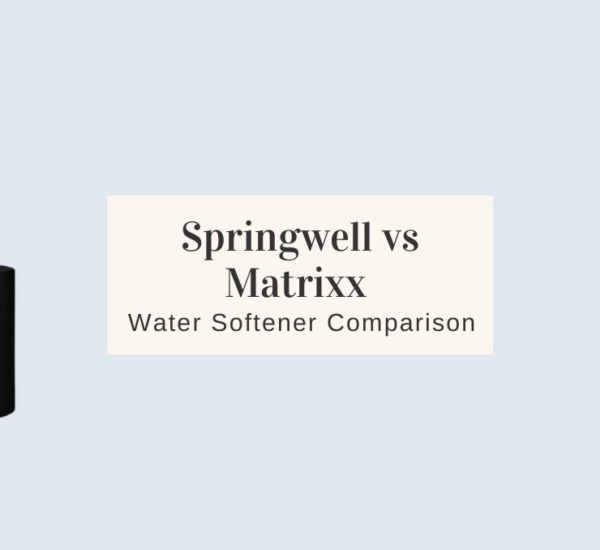**Understanding Hybrid Water Softeners: The Smart Solution for Modern Homes**
Traditional water softeners waste thousands of gallons annually through regeneration cycles, while salt-free conditioners often fail to remove hardness effectively. Hybrid water softeners bridge this gap by combining ion-exchange technology with advanced filtration or conditioning methods, delivering softer water while reducing salt consumption by up to 50% and minimizing environmental impact.
Consider your water usage patterns before investing. If your household experiences fluctuating water demands—weekdays versus weekends, or seasonal variations—hybrid systems automatically adjust regeneration schedules based on actual consumption rather than preset timers. This smart metering prevents unnecessary salt and water waste, making them ideal for eco-conscious homeowners seeking efficiency without compromising performance.
Evaluate your local water hardness levels through professional testing. Hybrid systems excel in moderately hard water conditions (7-15 grains per gallon), where they balance mineral removal with resource conservation. For extremely hard water above 15 grains per gallon, traditional softeners might prove more cost-effective, while below 7 grains per gallon, salt-free alternatives could suffice.
Calculate long-term operational costs beyond initial investment. While hybrid units typically cost $200-500 more upfront than conventional softeners, reduced salt purchases (averaging $50-100 annually) and lower water bills from decreased regeneration cycles create payback periods of 3-5 years. Factor in extended appliance lifespans and reduced detergent needs when assessing true value.
This technology represents water treatment evolution, not revolution—proven ion-exchange softening enhanced with modern efficiency features that align with sustainable living goals.
What Makes a Water Softener ‘Hybrid’?
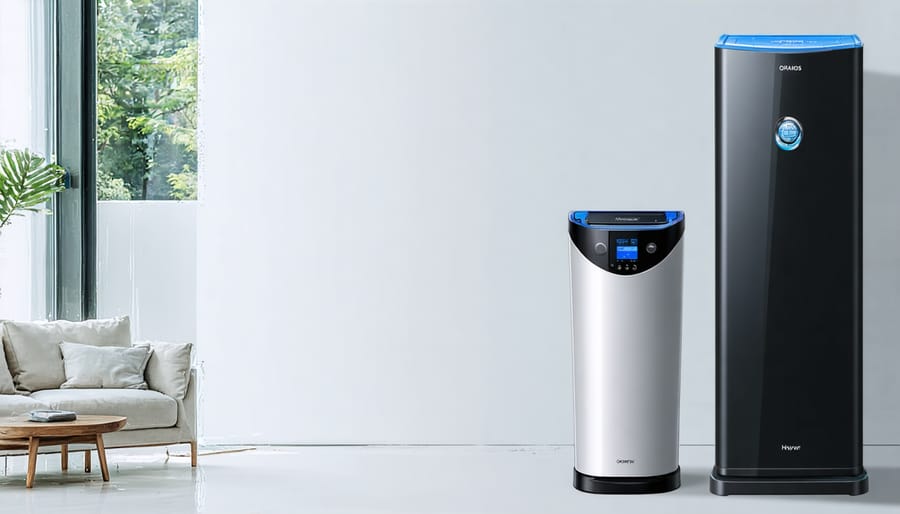
The Two Technologies Working Together
Think of a hybrid water softener as a tag-team approach to water treatment. The system combines two complementary technologies that work sequentially to tackle different aspects of hard water problems.
First, water passes through a conditioning stage—similar to how salt-free water softener systems operate. This stage uses Template Assisted Crystallization (TAC) media or electromagnetic fields to alter the structure of mineral particles. Imagine transforming sticky magnets into smooth marbles—the minerals lose their ability to cling to surfaces, preventing scale buildup in your pipes and appliances. However, these minerals remain in the water.
Next, the conditioned water flows into a traditional ion-exchange resin tank. Here’s where the actual “softening” occurs. Think of this like a trade: calcium and magnesium ions (the hardness minerals) swap places with sodium ions in the resin beads. This process removes the minerals entirely from your water, delivering that silky-soft feel you notice when washing.
This dual approach offers the best of both worlds. The conditioning stage reduces the workload on the salt-based system, meaning less salt consumption and fewer regeneration cycles. Meanwhile, the traditional softening ensures you still get genuinely soft water for cleaning, bathing, and protecting appliances. It’s like having a filter that catches large debris before your main filtration system—both components last longer and perform more efficiently together than either would alone.
How This Differs From Standard Softeners
Traditional water softeners rely exclusively on ion exchange, where salt continuously regenerates resin beads that remove hardness minerals. This process eliminates calcium and magnesium by replacing them with sodium, requiring regular salt additions and producing brine wastewater during regeneration cycles.
Hybrid systems take a dual approach by combining ion exchange with salt-free conditioning methods like Template Assisted Crystallization (TAC). Instead of removing all minerals, hybrids allow some treated minerals to pass through in a crystallized form that won’t stick to pipes or appliances. This means you use significantly less salt—often 50-75% less—and generate considerably less wastewater.
The practical implications for your home are substantial. With a hybrid, you’ll refill salt less frequently, reduce your environmental footprint, and retain beneficial minerals in your drinking water. Your monthly maintenance drops from lugging heavy salt bags every few weeks to perhaps once every two months. You’re essentially getting scale prevention benefits without fully committing to the high salt consumption and discharge that conventional softeners demand, making it an intelligent middle-ground solution for eco-conscious households.
The Real-World Benefits You’ll Actually Notice
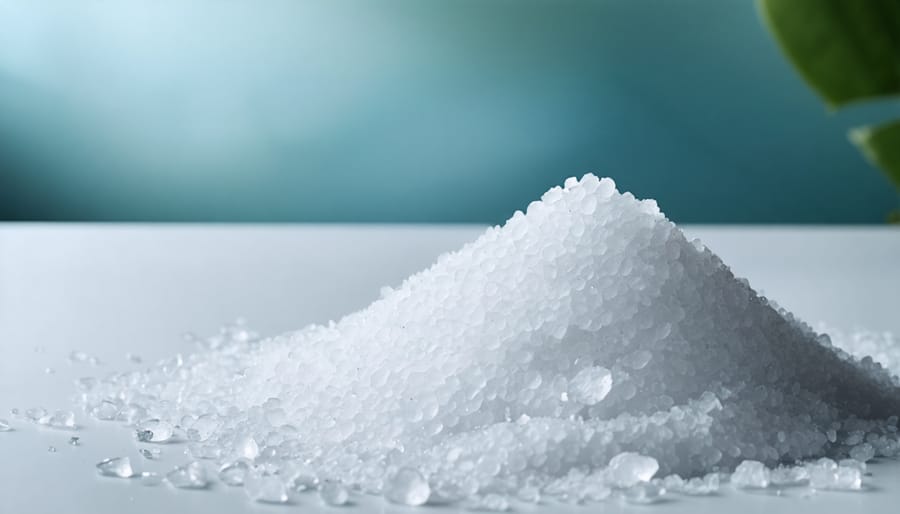
Slash Your Salt Usage and Costs
Hybrid water softeners can slash your water softener salt consumption by 30-50% compared to traditional ion-exchange systems. For the average household using 40-80 pounds of salt monthly, that translates to savings of $50-$120 annually on salt purchases alone.
How does this work? The hybrid approach combines salt-based softening with alternative technologies like Template Assisted Crystallization (TAC) or electromagnetic conditioning. This dual-action system handles hard water minerals more efficiently, requiring fewer regeneration cycles—the process where salt recharges the softening resin.
Consider a typical family of four: A conventional softener might use 480 pounds of salt yearly (costing around $120-$180), while a hybrid system could reduce that to 240-336 pounds (approximately $60-$100 annually). Beyond direct salt costs, you’ll also see reduced water and energy consumption during regeneration cycles, adding another $30-$50 in annual savings.
For environmentally-conscious homeowners, this reduction means less sodium chloride entering wastewater systems and fewer heavy bags to transport and store—a win for both your budget and the planet.
Dramatic Water Waste Reduction
Traditional water softeners regenerate on a fixed schedule, often flushing away gallons of water several times per week whether it’s needed or not. Hybrid water softeners take a smarter approach by monitoring actual water usage and only regenerating when necessary. This intelligent system can reduce backwash cycles by up to 50% compared to conventional models.
The water savings are substantial. A typical household using a traditional softener might consume 50-80 gallons per regeneration cycle, totaling 200-400 gallons weekly. Hybrid systems can cut this down to 100-200 gallons per week, saving approximately 5,000-10,000 gallons annually. For eco-conscious homeowners, that’s equivalent to hundreds of loads of laundry or dozens of showers returned to productive use.
Beyond environmental benefits, these savings translate directly to lower water bills—particularly impactful in drought-prone regions or areas with higher utility rates. Additionally, reduced salt usage during fewer regeneration cycles means less brine discharge into municipal water systems, supporting broader watershed health. For households committed to sustainable living, hybrid technology represents a meaningful step toward responsible resource management without sacrificing the soft water benefits your home needs.
Better for Your Plumbing and Appliances
Traditional water softeners can sometimes create problems by making water too soft, which may corrode pipes, leave a slippery residue, and damage certain appliances over time. Hybrid water softeners strike the perfect balance by preventing scale buildup without removing all the beneficial minerals from your water.
These innovative systems protect your plumbing and extend the life of water-using appliances like dishwashers, washing machines, and water heaters by preventing hard water deposits. Unlike conventional softeners that can leave sodium residue in your pipes, hybrid models maintain ideal water chemistry that’s gentle on both modern and older plumbing systems.
The controlled softening approach means you won’t experience the “slick” feeling of over-softened water or worry about accelerated pipe deterioration. Your fixtures stay cleaner, your appliances run more efficiently, and you avoid costly repairs—all while using a system that adapts to your household’s actual water needs rather than treating every drop with maximum softening intensity.
Healthier Drinking Water
Hybrid water softeners offer a health-conscious advantage by significantly reducing sodium levels in your drinking water compared to traditional salt-based systems. By blending softening with alternative treatment methods, these innovative systems minimize salt discharge while preserving essential minerals like calcium and magnesium that benefit your body. This balanced approach means you’re not drinking water overly loaded with sodium—a consideration for households monitoring salt intake. The result is softer water that protects your plumbing and appliances while maintaining a more natural mineral profile, giving you peace of mind about what flows from your tap.

When Hybrid Systems Make the Most Sense
Moderate Hardness Situations
Hybrid water softeners perform best when your home’s water falls into the moderate hardness range—typically between 7 and 15 grains per gallon (GPG), or 120 to 250 parts per million (ppm). At these levels, you’ll notice soap scum, minor scale buildup on fixtures, and reduced appliance efficiency, but the problems aren’t severe enough to require aggressive treatment.
To determine if your water fits this category, start with a simple at-home test kit available at hardware stores or online for under $20. These kits use color-changing strips that you dip in your tap water. Match the resulting color to the provided chart to get your hardness reading. For more precise results, consider requesting a free water quality report from your municipal supplier or investing in a professional lab analysis.
If your results land in the 7-15 GPG range, a hybrid system offers the perfect balance—softening your water enough to protect plumbing and improve daily comfort while using eco-friendly technology that minimizes salt consumption and wastewater. This makes hybrid units ideal for environmentally-conscious homeowners seeking effective water treatment without the environmental footprint of traditional ion-exchange softeners.
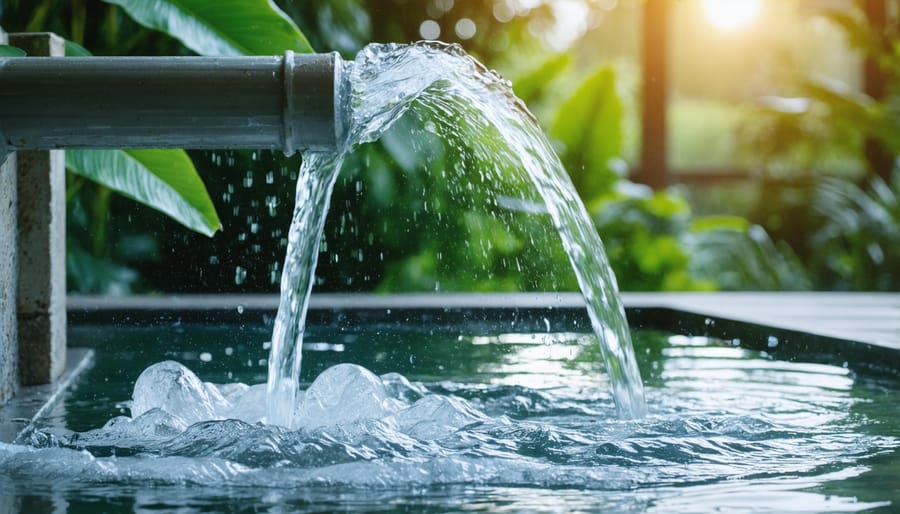
Eco-Focused Households
For homeowners committed to reducing their environmental footprint, hybrid water softeners represent a significant step toward sustainable living. These innovative systems use up to 50% less salt than traditional softeners, meaning fewer mining resources extracted and less sodium discharged into wastewater treatment facilities and natural ecosystems.
The reduced water consumption during regeneration cycles—often 30-40% less—translates to thousands of gallons saved annually per household. This conservation matters especially in drought-prone regions where every drop counts. Additionally, hybrid systems help extend the lifespan of water heaters, dishwashers, and other appliances by preventing scale buildup, which reduces the frequency of replacements and keeps more products out of landfills.
By combining salt-based softening with alternative technologies like template-assisted crystallization or electromagnetic conditioning, hybrid systems deliver effective water treatment while aligning with eco-conscious values. The initial investment supports long-term environmental stewardship without compromising on performance or household water quality.
When Traditional Might Still Be Better
While hybrid systems excel in many households, they’re not always the perfect solution. If you’re dealing with extremely hard water—say, above 20 grains per gallon—traditional salt-based systems typically offer more reliable performance and require less maintenance. Homes with consistently high water usage, like large families or those running small businesses, may also benefit from the robust capacity of conventional softeners.
Similarly, if your budget is tight and upfront cost is your primary concern, a basic salt-based system might be more economical initially. In regions where water hardness fluctuates dramatically throughout the year, the specialized treatment approach of hybrids may not adapt as effectively as standard softeners.
Consider your specific situation carefully. Traditional systems have decades of proven performance behind them, and sometimes the tried-and-true approach is genuinely the smarter choice for your home’s unique water challenges.
Installation and Maintenance: What to Expect
Space and Setup Requirements
Hybrid water softeners typically require similar space to traditional softening systems, though their compact designs are becoming increasingly efficient. Most units measure between 10-15 inches in diameter and 40-60 inches in height, making them suitable for standard utility rooms, basements, or garages. However, the key advantage lies in their streamlined installation process.
Unlike conventional softeners that may need separate pre-filtration units, hybrid systems integrate multiple treatment stages into one cabinet, reducing overall footprint. You’ll need access to your main water line, a drain for backwashing, and a standard electrical outlet. The plumbing connections are straightforward—typically requiring inlet and outlet connections plus a drain line.
Installation considerations include ensuring adequate clearance (usually 10 inches) around the unit for maintenance access and salt refilling. Most homeowners with basic plumbing knowledge can install these systems, though professional installation ensures optimal performance and protects warranties. The eco-friendly advantage? Many hybrid models feature space-saving designs that fit tighter spaces than older systems, making them ideal for modern homes where every square foot counts. Additionally, their efficient regeneration cycles mean you’ll use less water and salt during operation.
Maintenance Schedule and Costs
Hybrid water softeners require significantly less upkeep than traditional systems, making them an attractive choice for busy homeowners. On average, you’ll spend less time and money maintaining these innovative units while enjoying consistent performance.
**Routine Maintenance Tasks**
Your primary responsibility involves checking salt levels monthly and refilling the brine tank approximately every 2-3 months, depending on water usage and hardness. Most households use 40-80 pounds of salt monthly, costing around $5-10. The electronic monitoring components require minimal attention—simply replace backup batteries annually if your model includes them.
Every 6-12 months, inspect the brine tank for buildup and clean the resin bed using manufacturer-recommended cleaners ($15-25 per treatment). This prevents common salt-related maintenance issues and extends system lifespan. The pre-filter, if included, needs replacement every 3-6 months at approximately $20-40 per filter.
**Annual Cost Breakdown**
Budget around $100-200 annually for routine maintenance, including salt ($60-120), cleaning solutions ($30-50), filters ($40-80), and minor replacement parts. Professional servicing, recommended every 2-3 years, runs $150-300 but catches potential problems early.
**The Hybrid Advantage**
Compared to conventional softeners requiring frequent regeneration cycles and higher salt consumption, hybrid systems reduce salt usage by 30-50% through smart technology. Their adaptive regeneration means fewer mechanical cycles, translating to longer-lasting components and fewer repair calls—a win for your wallet and the environment.
Cost Analysis: Investment vs. Long-Term Savings
Initial Purchase and Installation
Investing in a hybrid water softener requires upfront planning, but understanding the costs helps you budget effectively. These innovative systems typically range from $1,500 to $3,500 for the unit itself, depending on capacity, features, and brand. This places them in the mid-to-upper price range compared to traditional salt-based softeners, which start around $500, and reverse osmosis systems that can exceed $4,000.
Professional installation adds another $300 to $1,000 to your total investment, varying by plumbing complexity and regional labor rates. Some homeowners with DIY experience may tackle installation themselves, though professional setup ensures optimal performance and protects warranties.
While the initial expense is higher than conventional softeners, hybrid systems offer long-term value through reduced salt consumption, lower maintenance needs, and extended equipment lifespan. Many eco-conscious homeowners find the upfront investment worthwhile given the environmental benefits and ongoing operational savings. When budgeting, factor in potential plumbing modifications and any necessary electrical work to accommodate your new system’s footprint and power requirements.
Operating Costs Over Time
Understanding the long-term financial impact of your water softener choice helps you make a smarter investment decision. Let’s break down the real costs you’ll face year after year with both systems.
**Traditional Salt-Based Softeners: Annual Operating Costs**
A conventional water softener typically requires 200-400 pounds of salt annually, costing between $60-$120 depending on your water hardness and household size. These systems also consume 25-100 gallons of water per regeneration cycle, which occurs 2-3 times weekly. For a family of four, this translates to roughly 5,000-15,000 gallons of wasted water yearly—adding $30-$90 to your water bill. Energy consumption remains minimal at about $20-$30 annually. Total yearly costs typically range from $110-$240, not including occasional maintenance visits.
**Hybrid Systems: Reduced Operating Expenses**
Hybrid water softeners slash these ongoing costs significantly. By using smart regeneration technology and incorporating salt-free components for some of the conditioning work, hybrids reduce salt consumption by 30-50%, bringing costs down to $30-$70 annually. Water waste drops dramatically—up to 75% less than traditional systems—saving you another $20-$70 yearly. Energy costs remain comparable at $20-$35. Your total annual operating costs with a hybrid system typically fall between $70-$175.
**Payback Period Analysis**
While hybrid systems cost $500-$1,000 more upfront than traditional softeners, the annual savings of $40-$100 mean you’ll recover this premium in 5-12 years. For homeowners planning to stay long-term, this represents genuine value. Beyond the financial payback, you’re also reducing environmental impact from day one—making hybrid technology an investment in both your wallet and sustainable living.
Key Features to Look For
Smart Technology and Efficiency Controls
Today’s hybrid water softeners come equipped with smart technology that puts you in control while reducing waste. Modern systems feature digital displays and monitoring capabilities that track your water usage patterns in real-time, giving you clear insights into consumption and system performance. This data-driven approach means your softener regenerates only when actually needed, rather than on a fixed schedule that may waste water and salt.
Demand-based regeneration is a game-changer for eco-conscious households. These intelligent systems calculate exactly when regeneration is necessary based on your family’s actual water consumption, which can reduce salt usage by up to 50% compared to traditional timer-based models. Some advanced units even learn your household patterns over time, optimizing their performance automatically.
Connectivity features take efficiency further, with WiFi-enabled models allowing remote monitoring through smartphone apps. You’ll receive alerts about salt levels, potential maintenance needs, and system efficiency—all from your phone. These innovations ensure your hybrid softener operates at peak performance while minimizing environmental impact, making sustainable water treatment easier than ever before.
Certifications and Quality Standards
When shopping for a hybrid water softener, look for products certified by reputable organizations that verify performance and safety. The **NSF International** certification is the gold standard in water treatment—think of it as the “Good Housekeeping Seal” for water softeners. NSF/ANSI Standard 44 specifically tests water softeners for contaminant reduction, structural integrity, and claims accuracy. This means a certified unit actually does what the manufacturer promises.
The **Water Quality Association (WQA) Gold Seal** is another trusted mark indicating independent testing has confirmed the system meets industry standards. This certification verifies that your hybrid softener efficiently reduces hardness while maintaining safe water quality.
These certifications matter because they protect you from unverified marketing claims. A certified hybrid water softener has undergone rigorous testing to ensure it performs reliably over time, uses materials safe for drinking water, and delivers the eco-friendly benefits you’re investing in. When comparing models, prioritize those carrying NSF or WQA certifications—they’re your assurance that you’re getting a quality product that will genuinely improve your home’s water while supporting sustainable living goals.
Hybrid water softeners represent a meaningful step forward for homeowners who want effective water treatment without compromising their environmental values. By combining traditional ion exchange with salt-free conditioning technologies, these innovative systems deliver the benefits of soft water while significantly reducing salt consumption, wastewater discharge, and ongoing maintenance demands. For eco-conscious households, this translates into a smaller environmental footprint alongside lower operating costs and healthier water for everyday use.
The practical advantages are equally compelling. Hybrid systems protect your plumbing and appliances from scale buildup, extend the lifespan of water heaters, reduce detergent usage, and provide better-quality water for drinking and bathing. Unlike conventional softeners that require frequent salt refills and generate brine waste, hybrid models operate more efficiently and align with sustainable living principles that matter to environmentally-aware homeowners.
Before making your decision, take time to assess your specific situation. Test your water hardness levels, evaluate your household’s daily water consumption, and consider your budget for both upfront investment and long-term savings. If you have moderately hard water and prioritize environmental responsibility alongside performance, a hybrid system likely represents your best option. For those with extremely hard water, understanding the limitations of salt-free components will help set realistic expectations. Ultimately, choosing the right water treatment solution starts with knowing your water quality and matching it to technology that serves both your household needs and sustainability goals.

